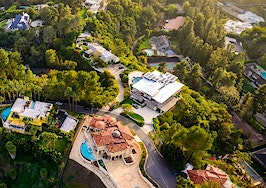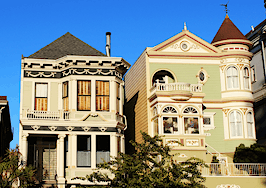Although inventory at the luxury level has remained robust in the midst of a shortage at the mid- and lower- priced tiers, realtor.com says that didn’t translate into extra sales during 2017. In fact, the average luxury property stayed on the market for 116 days — a 5.3 percent year-over-year increase from 2016.
Furthermore, the national luxury entry point increased 5.1 percent year-over-year to $804,000, while the national median sales price grew 1.8 percentage points more to 6.9 percent.
Realtor.com director of economic research Javier Vivas says despite these stats, 2017 was a great year for buyers shopping at the higher end of the market.
“Although 2017 was another strong year for the luxury housing market, it was outperformed by the U.S. market overall,” said Vivas in an emailed statement.
“Age of inventory in the top 5 percent of the market slowed significantly over last year — a telltale sign that the luxury sector as a whole has weakened. Much of this slowing can be attributed to a wider selection of luxury homes for buyers and increased uncertainty over the last 12 months.”

Source: realtor.com
At the local level, luxury markets in California, Colorado, Hawaii and New York have fared exceptionally well over the past year with double-digit price gains.
Maui (32.73 percent); Eagle, Colorado (31.49 percent); Kings, New York (30.33 percent); Kauai (25.11 percent); Hawaii (24.84 percent) and Honolulu (21.79 percent) counties all experienced home price growth above 20 percentage points, resulting in average home prices ranging from $1,753,158 to $2,485,125.
Brooklyn; Seattle; and Marin, California in the Bay Area also posted 12 percent to 30 percent growth year-over-year, landing them in the top 10 fastest growing primary-home luxury markets in country, thanks to new development sales and increased demand from Chinese buyers.

Source: realtor.com
When it comes to the highest sales prices, New York tops the list with a median sales price of $5,284,197 — a whopping $1,913,509 more than the second most expensive market, San Mateo, California.
California dominated the list, snagging half of the top 10 spots thanks to multi-million dollar asking prices in Marin ($3.28 million), San Francisco ($3.21 million), Santa Clara ($2.58 million) and Santa Barbara ($2.47 million).
Looking forward to 2018, realtor.com says owners of these lavish properties need to keep an eye on the Tax Cuts and Jobs Act, which caps mortgage interest deductions at $750,000 and doesn’t allow homeowners to deduct the interest paid on vacation homes.
Furthermore, buyers in high-tax states such as New York and California will also have to grapple with choosing between property taxes and state and local taxes, says realtor.com, since SALT (state and local tax) deductions have been limited to $10,000.












